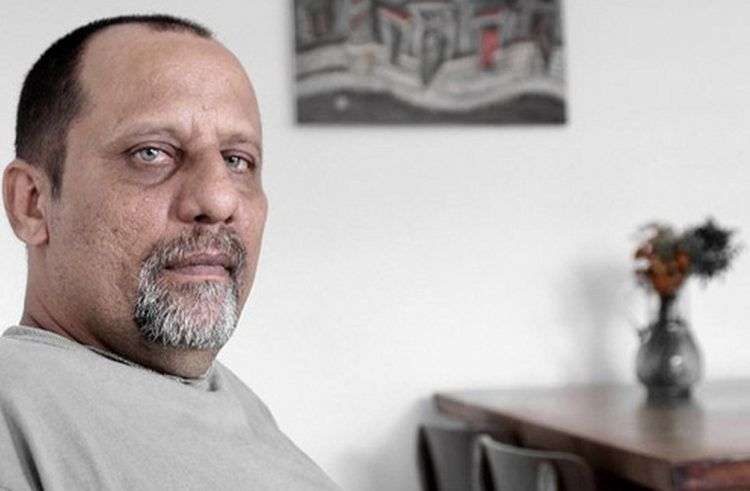An old science-fiction argument states that when someone takes a time travel to the past and changes something, anything, it will trigger further changes and on his way back will find an alternative unrecognizable present. I have given this idea some thought while waiting for the finals of the FIFA World Cup. I went back two decades to recall (which doesn’t mean relive) the final of the World Cup in the United States in 1994.
The score in the clash between Brazil and Italy was 0-0 so they moved to penalty. It is Roberto Baggio’s turn –he is the Italian crack, the Cristiano Ronaldo of that time but with a 10 on his back, the number of stars like Maradona, Zidane, Messi…
“El numero 10” (The number 10) is the title of a poem by Juan Carlos Flores, included in his book El Contragolpe(y otros poemas horizontales) (LetrasCubanas, 2009), dedicated to the precise moment Roberto Baggio missed the final penalty. The ball ended up in the Rose Bowl’s stand in Pasadena, Brazil became world champion for the fourth time and Juan Carlos Flores wrote:
…sé lo que significa pertenecer a un equipo de fútbol, sé lo que significa acertar y sé lo que significa fallar, arte o fútbol o guerra, trabajar por algo cansa, trabajar por nada cansa más: aquellas nanas, mi madre, aquellas nanas, cántame una.
…I know what it means to belong to a football team, I know what it means to do it always right and never miss, art, football or war, working for something is tiresome, working for nothing is even more tiresome: those lullabies, mother, those lullabies, sign one for me.
In another poem in that book it reads:
Diversos goleadores, los llamados crack, cuando fallan, hincan las rodillas contra el césped, y apretadas las manos a cada costado de las cabezas, miran hacia el cielo como si allí esperase, sentada, la respuesta a la pregunta que raspa: ustedes, viviendo entre gestos violentos, deberían quizás sonreír… (“Zigzag”).
Several goal-scorers, the so-called cracks, when they miss, they fall on their needs to the ground and put their hands on their heads looking to the sky as if the answer was sitting up there: iving among violent gestures, perhaps you should smile (“Zigzag”).
Who does “you” refer to? What violent gestures? The truth is that barely two or three weeks after that final, in August, many Cubans jumped into the water and headed to the US. If there is a means to irreparably connect football –an idea of failure and total neglect football intrinsically carries like a bundle that can pull you deep down any minute–with those Cubans, it is has to be through Juan Carlos Flores writing.
I think of a man and a fragile boat, tired of rowing, starving and thirsty and surrounded by water looking at the sky as if it had the answers, lulling themselves in the middle of the night with the lullabies their mothers used to sing to them. I go over the pages of El Contragolpe… and I read:
En esa caravana me hubiera gustado a mí enrolarme, ir tocando armónica hasta los fuegos verdes de Miami Beach.
I wish I had lined up in that convoy and play my harmonica till Miami Beach’s green fireworks.
Nana, para festejar, a la vuelta de todo, si es que hay vuelta de todo, guárdame otra bolsa de plástico (“Meta volante”).
Nana, for celebrating, on the return, if there is a return, save me another plastic bag (“Meta volante”).
That’s what Juan Carlos Flores uses for writing: plastic bags, pieces of nylon, and ropes, and cloth, and old trucks flat tires. His poems are mixed techniques with plastic, tires, wood. These impose the rhythm of urgent and improvised hammering.
Survivors, those who didn’t lined up, assembles his texts so that they can float horizontally as rafts. Poems for escaping. Few Cuban poets, like Juan Carlos Flores, offer the show of writing out in the open, surrounded by sharks.
And the show, in El Contragolpe… —the book is divided in “section-galleries” with povera arrangements made from peanut cones: Peanut Gallery I, Peanut Gallery II, etc.—, is organized as an exhibit. Its most relevant characteristic is not the work as such but the materials used in it.
In the local hyper-realistic narrative, that huge summer twenty years ago gave impetus to this genre (Balseros/rafters). Barely anything remains from that period. Why? First, because most Cuban writers are blind toshades –back in 1994 Reinaldo Arenas had already seen it when he wrote about that color of “sudden and terrible shades” in El color de verano–; and second, because most of them wrote about rafts crews and forgot about the materials they had been built with.
(In the field of arts, where there is obviously a more direct sense of materials, talking about that is to talk about a signature. We already know what happened with Kcho. I have the feeling that his work show, at the right moment, a movement for the convenience of some and the satisfaction of others: the “condition of emigrant” applies to the whole island, which is clearly made of cork, which doesn’t sink, something like tricking damned circumstances in an unspeakable party.)
Is recalling all this of any use? I believe it is. The Strait of Florida has to be told. We have to continue narrating the Strait of Florida: for the present and the future. Rafters are no longer in the maps –they drowned, got lost, arrived to their destination, returned… –but those famous 90 miles still holds an archipelago of shredded rafts.
They were the key of everything. Not the bodies: the dismasted remains. Floating trash, as a collage, made of resilient and scarce materials. These are still handy and we should think of them before stepping into the Cuban-US border.
Let’s keep them.










